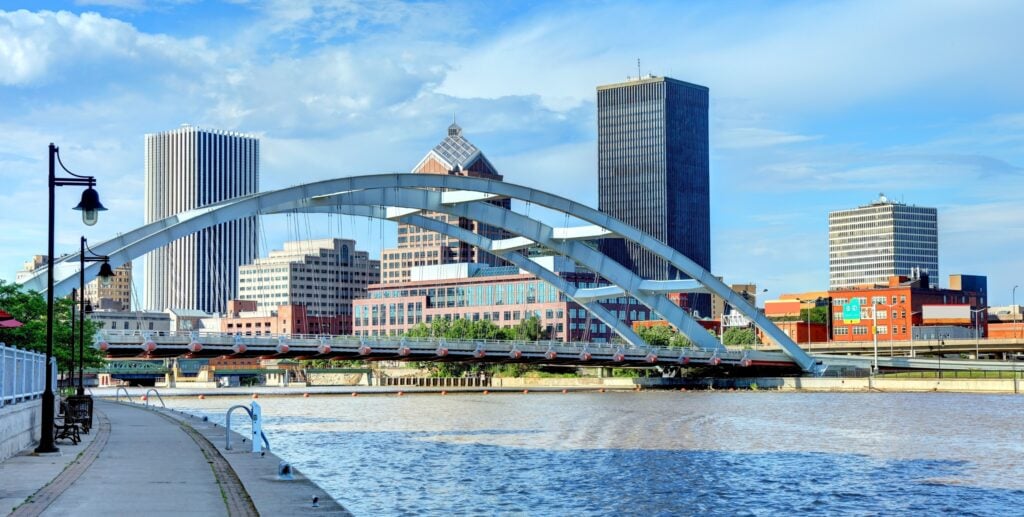Florida’s West Coast, previously a hot spot during the pandemic, is now witnessing a notable drop in property prices due to an increase in inventory, surging insurance costs, and the impact of recent severe weather events. This cooling trend is mirrored in other Sunbelt areas except for some affordable Midwest and Northeastern cities like Racine, Wisconsin, and Youngstown, Ohio, which are seeing double-digit price growth. Key economic growth, affordability, and a decrease in migration to Sunbelt states fuel this surge. Massive investments, such as Micron Technology’s $100 billion project in Syracuse, NY, coupled with government funding for chip manufacturing, are heavily influencing housing demand and job creation in the Northeast, signaling it as a new focal point for growth.
While Florida once shone brightly for property investors, some cities are now dipping in value. Among them, Punta Gorda and the surrounding areas witnessed a 6.5% drop in home prices over the last quarter, dragging the median price down to $350,000, the most significant decrease since 2011. The North Port-Sarasota-Bradenton area isn’t faring much better, dropping 5.8% to a median of $485,000. Even Cape Coral-Fort Myers has seen a 3.7% decline on top of earlier price reductions this year.
According to Lawrence Yun, the NAR’s chief economist, the Southeast is bogged down by a trio of challenges: “more inventory, higher insurance costs, and increased homebuilding in recent years.” Adding to the strain is extreme weather. Hurricanes Helene and Milton this fall spooked buyers after Milton made landfall near Sarasota, claiming lives and destroying homes, shaking the community’s confidence. Such events mean Florida needs to recover both emotionally and structurally.
The fallout from these economic factors isn’t isolated to Florida alone. Texas’s San Antonio-New Braunfels and North Carolina’s Durham-Chapel Hill are also seeing either flatlining or falling house prices, even after experiencing more than 20% increases post-pandemic. Yet, despite these drops, housing prices in these regions remain higher than pre-pandemic levels and out of reach for the average buyer.
Shifting gears, the Midwest and Northeast are now reveling in their newfound allure. Cities in the Midwest, known for their affordability, show substantial price gains. NAR data pinpoints Racine, Wisconsin, leading the growth parade with a 13.7% increase, while Youngstown-Warren-Boardman, Ohio, follows close with a 13.1% rise. Compared to their national peers, these cities remain attractively affordable—a median home fetching $310,200 in Racine and $171,100 in Youngstown.
Meanwhile, the Northeast isn’t lagging. In Syracuse, NY, prices surged by 13%, with even Norwich-New London, Connecticut, recording a 10.6% climb. Cities here have caught the eye due to their lower prices and influx of new residents lured by job opportunities.
With companies dialing back remote work policies, the mass migration to warmer southern states is waning, reviving the Northeast’s appeal. Tech industries are driving much of this rejuvenation. The Biden administration’s multi-billion-dollar investment into U.S. chipmakers is setting a new stage for growth. Albany, NY, for instance, recently received an $825 million semiconductor research investment, and Zillow notes a 6.7% boost in housing prices over the year.
Syracuse, in particular, braces for economic change. Micron Technology’s proposed $100 billion factory complex promises tens of thousands of jobs and requires significant upgrades to the local infrastructure. Housing in Syracuse, where average rents are 26% below the national average, needs to expand dramatically to meet the influx.
Tech’s ripple effects extend beyond just city limits, as Joe Driscoll of Syracuse explained. The city anticipates a balanced boom of mixed-use development—fostering economic and community growth while maintaining affordable housing.
Analysts at Warren Buffett’s BusinessWire pinpoint the Northeast and Midwest as top contenders for the 2025 housing market boom, forecasting appreciations ranging from 6.3% to 7.7%. This projection doesn’t even factor in the full scope of tech developments brewing in the region.
In summary, if you’ve been puzzled by recent real estate trends, you’re not alone. Post-pandemic, when the Sunbelt seemed unbeatable, the Northeast was momentarily sidelined as remote workers fled for warmer places. But with the tide turning, these northern states are back in the spotlight. As the broader U.S. housing market shows a healthy upward trend of 3.4% year-over-year growth as of September 2024, attentive investors are watching local economies closely. Notably, the dynamic shifts in regions are painting a vibrant, though at times volatile, picture of the real estate landscape. While Florida might reevaluate, the Northeast is cheered by the possibility of sustained growth.
















